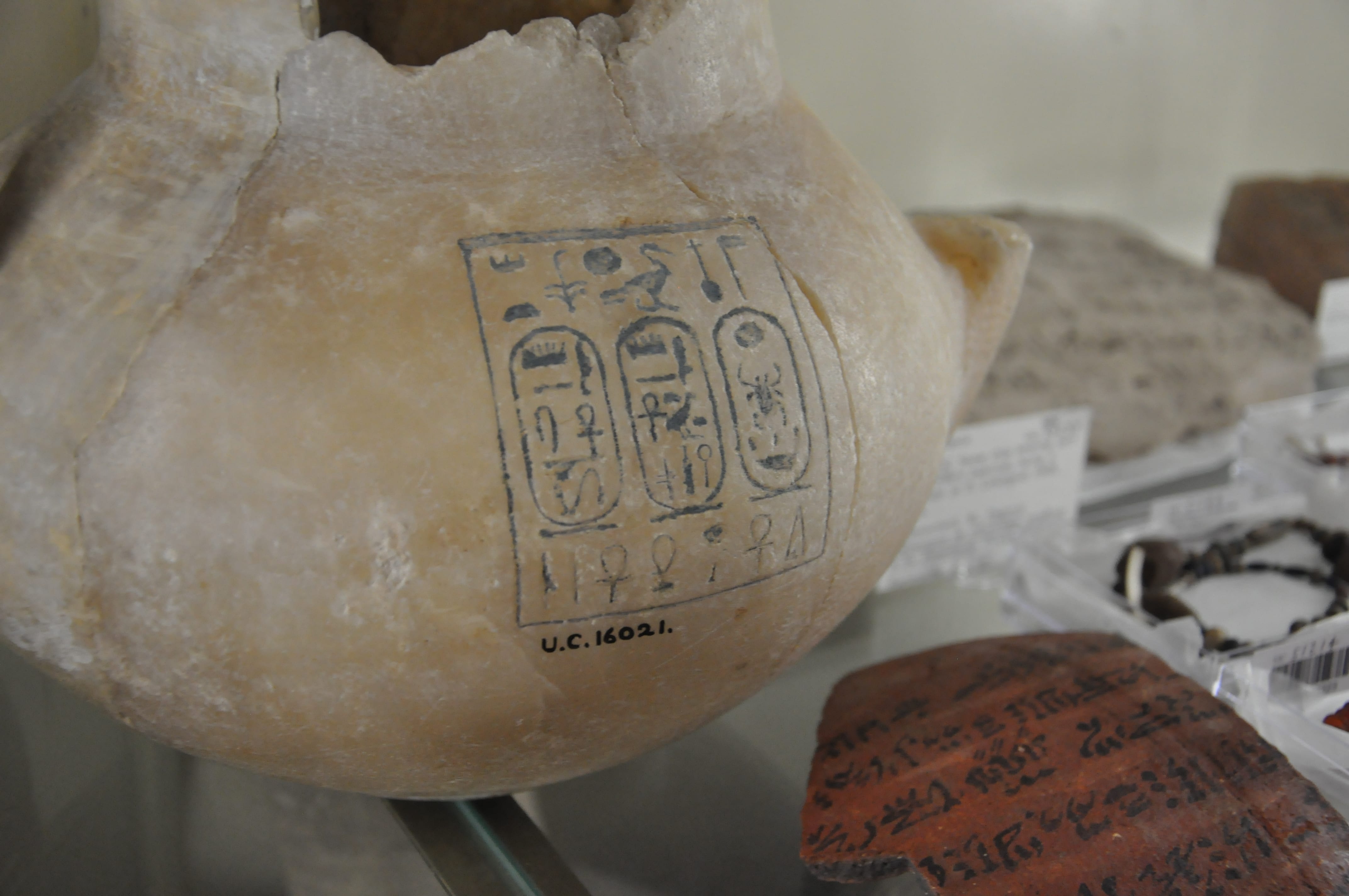Public Engagement with UCL Deafness Cognition and Language Research Centre
By Anna E Garnett, on 26 September 2018
Rebecca Lambert is a long-time volunteer of the Petrie Museum, and in this guest blog Rebecca reports on a recent engagement session which she led with UCL Deafness Cognition and Language Research Centre.
As a volunteer at the Petrie Museum of Egyptian Archaeology I am very keen to engage with people from all walks of life and to help make the museum collection accessible to all. Earlier this summer I was asked to assist with the preparation and delivery of offsite activity for the UCL Deafness Cognition and Language Research Centre as part of the UCL Discover Summer School for potential UCL undergraduates.
The brief was to create an Ancient Egyptian based activity which would be suitable for young adults with an age range of approximately 16-18 years of age. There were to be twelve participants who each had differing levels of hearing loss. Some of the students communicated solely through British Sign Language (BSL), whilst others would use a combination of sign language and lip reading. Some of the students could communicate verbally, whilst some could not. To create an activity which would be accessible, challenging, but most of all, fun, I had to decide on a format which would enable the students to explore Ancient Egypt. I decided that the session should primarily focus on the visual and not rely on convoluted descriptive narratives which can appear wearisome, especially to teenagers. This being the case, I opted to download three different empty cartouche designs. I also brought copies of images of particularly striking inscribed objects in the Petrie Museum collection, which are illustrated here.
 Close
Close











